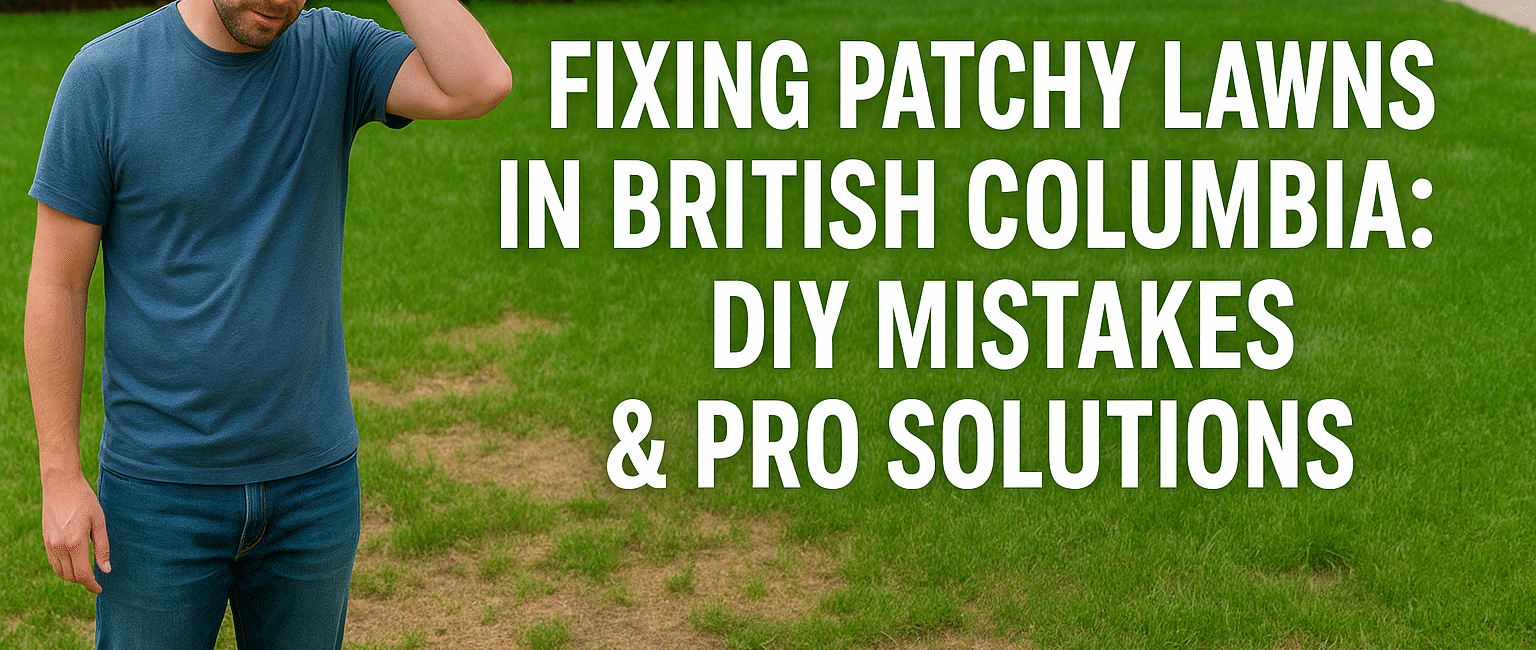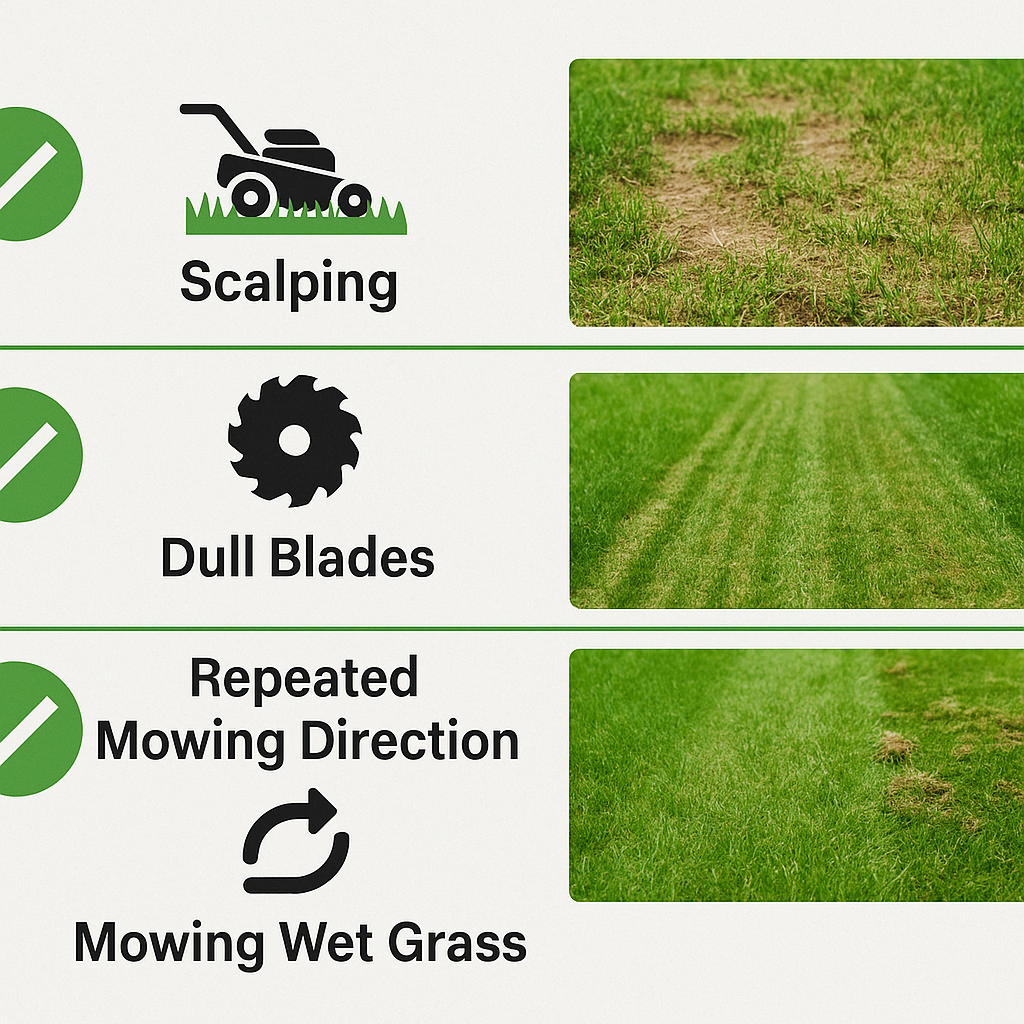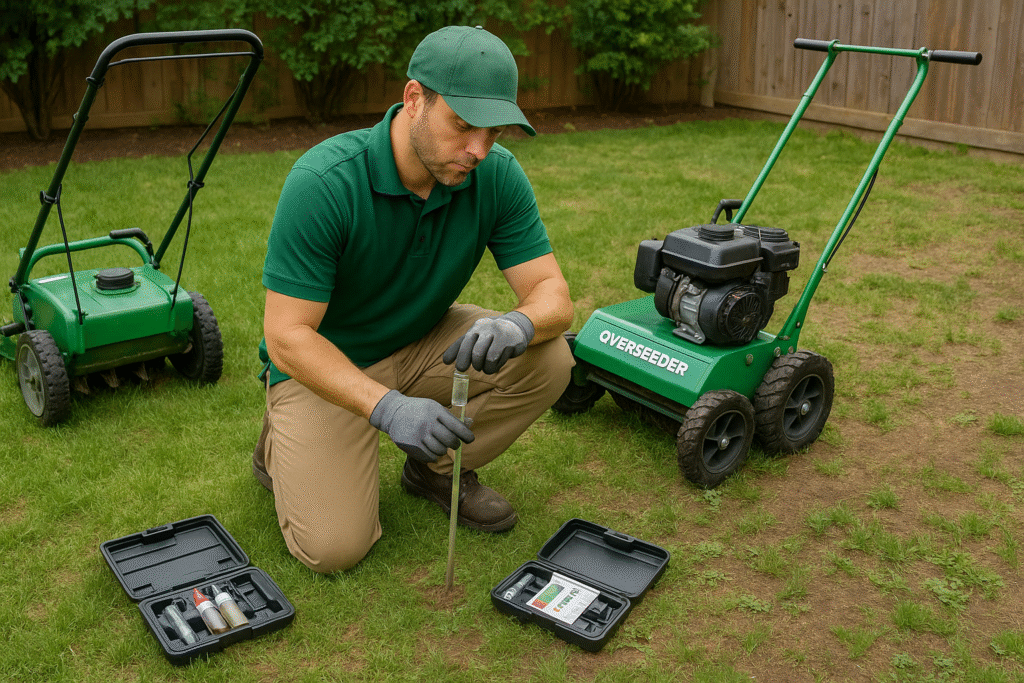
Nothing’s more frustrating than spending your weekend perfecting your lawn, only to step back and see uneven patches, brown spots, and grass that looks like it belongs in a patchwork quilt. If you’re wondering why your DIY lawn care efforts aren’t paying off while your neighbor’s professionally maintained yard looks like a golf course, you’re not alone.
The truth is, most homeowners across British Columbia make the same handful of mistakes that turn their green dreams into patchy nightmares. But here’s the good news: once you know what you’re doing wrong, fixing a patchy lawn becomes much easier.
The Most Common DIY Lawn Mowing Mistakes 🚫
1. Cutting Too Short (The “Scalping” Problem)
The biggest culprit behind patchy lawns? Cutting grass too short. Many homeowners think shorter grass means less frequent mowing, but this actually stresses your lawn and creates those unsightly brown patches.
What happens: Short grass can’t photosynthesize properly, roots weaken, and your lawn becomes vulnerable to weeds and disease.
Professional solution: Lawn care experts in BC follow the “one-third rule” – never cut more than one-third of the grass blade length at once.
2. Using Dull Mower Blades
Dull blades don’t cut grass – they tear it. This creates jagged edges that turn brown and make your entire lawn look unhealthy.
What to look for: If your grass tips look frayed or brown after mowing, your blades need sharpening.
3. Mowing in the Same Pattern Every Time
Always mowing in the same direction creates ruts and compacts soil in certain areas, leading to uneven growth patterns.
Professional tip: Alternate your mowing pattern each week – north-south one week, east-west the next.
4. Mowing Wet Grass
BC’s rainy climate makes this tempting, but wet grass clumps together, clogs your mower, and creates uneven cuts that promote disease.

How Professional Landscapers Fix Patchy Lawns 🔧
Assessment First
Professional lawn care services in British Columbia start with a comprehensive assessment. They identify:
- Soil compaction issues
- Drainage problems
- Pest or disease damage
- Nutrient deficiencies
- Sun/shade imbalances
Overseeding Strategy
Pros don’t just throw seed everywhere. They use:
- Cool-season grasses (fescue, ryegrass) for BC’s climate
- Targeted seeding in thin or bare areas
- Proper timing (early fall or late spring)
Soil Amendment
Professional services address the root cause by:
- Aerating compacted soil
- Top-dressing with quality compost
- pH testing and adjustment
- Fertilizing with slow-release, organic options

DIY vs. Professional Lawn Care: The Real Comparison 📊
| Aspect | DIY Approach | Professional Service |
|---|---|---|
| Initial Cost | Lower equipment investment | Higher upfront cost |
| Time Investment | 3-5 hours weekly | Zero time commitment |
| Results Timeline | 6-12 months for improvement | 2-4 months for visible results |
| Equipment Quality | Consumer-grade tools | Commercial-grade equipment |
| Expertise | Trial and error learning | Years of training and experience |
| Consistency | Weather and schedule dependent | Reliable, scheduled service |
| Problem Diagnosis | Limited knowledge | Professional assessment |
| Long-term Value | Variable results | Increased property value |
Quick Fixes You Can Try Today ⚡
For Immediate Improvement:
- Raise your mower height to 3-4 inches
- Sharpen or replace mower blades
- Water deeply but less frequently (1 inch per week)
- Remove thatch buildup with a rake
For Long-term Success:
- Overseed thin areas in early fall
- Apply organic fertilizer in spring and fall
- Aerate annually to reduce compaction
- Test soil pH every 2-3 years
When to Call the Professionals 📞
Consider professional lawn care services in BC if you’re experiencing:
- Persistent brown patches despite proper care
- Weed infestations that won’t respond to treatment
- Drainage issues causing soggy or dry spots
- Time constraints that prevent consistent care
- Complex problems like grub damage or disease
Professional landscapers have access to commercial-grade treatments and equipment that aren’t available to homeowners, plus the expertise to diagnose and treat complex lawn issues quickly.
The Bottom Line 💡
A patchy lawn isn’t a permanent sentence. Whether you choose the DIY route or hire professionals, understanding these common mistakes puts you ahead of most homeowners. The key is consistency, proper technique, and knowing when to seek help.
For busy families across British Columbia, professional lawn care often provides better value than the DIY struggle – your time is worth something too, and a beautiful lawn can significantly boost your property value.
📣 Ready for a Perfect Lawn?
Want a no-fuss mower recommendation based on your yard size and lifestyle? Head to BCServiceFinder.ca to get matched with local experts and service options.
Frequently Asked Questions (FAQ) ❓
How often should I mow my lawn to avoid patchy areas?
Mow when grass is about 4 inches tall, cutting it back to 3 inches. In BC’s growing season (April-October), this typically means weekly mowing, but adjust based on growth rate rather than a strict schedule.
What’s the best time of year to fix a patchy lawn in British Columbia?
Early fall (September) is ideal for overseeding and major repairs in BC. The soil is still warm, but cooler air temperatures and increased rainfall create perfect conditions for grass establishment before winter.
Can I fix brown patches without reseeding the entire lawn?
Yes! Most brown patches can be fixed with spot treatments: remove dead grass, loosen soil, apply quality grass seed, cover lightly with compost, and keep consistently moist for 2-3 weeks.
How much does professional lawn care cost compared to DIY in BC?
Professional services typically cost $100-300 monthly for average-sized yards, while DIY costs $500-1500 annually for equipment and supplies. Professionals often provide better long-term value through expertise and time savings.
What type of grass seed works best for BC’s climate and patchy lawn repair?
Perennial ryegrass and fine fescue blends work excellently in BC’s climate. They’re drought-tolerant, handle foot traffic well, and establish quickly to fill in patchy areas. Look for Pacific Northwest seed mixes at local garden centers.
💚 Found this helpful? If you found these lawn care tips valuable, please share this post with your friends on Facebook so they can make better decisions when tackling their own patchy lawn problems. Together, we can help more BC homeowners achieve the beautiful lawns they deserve!


